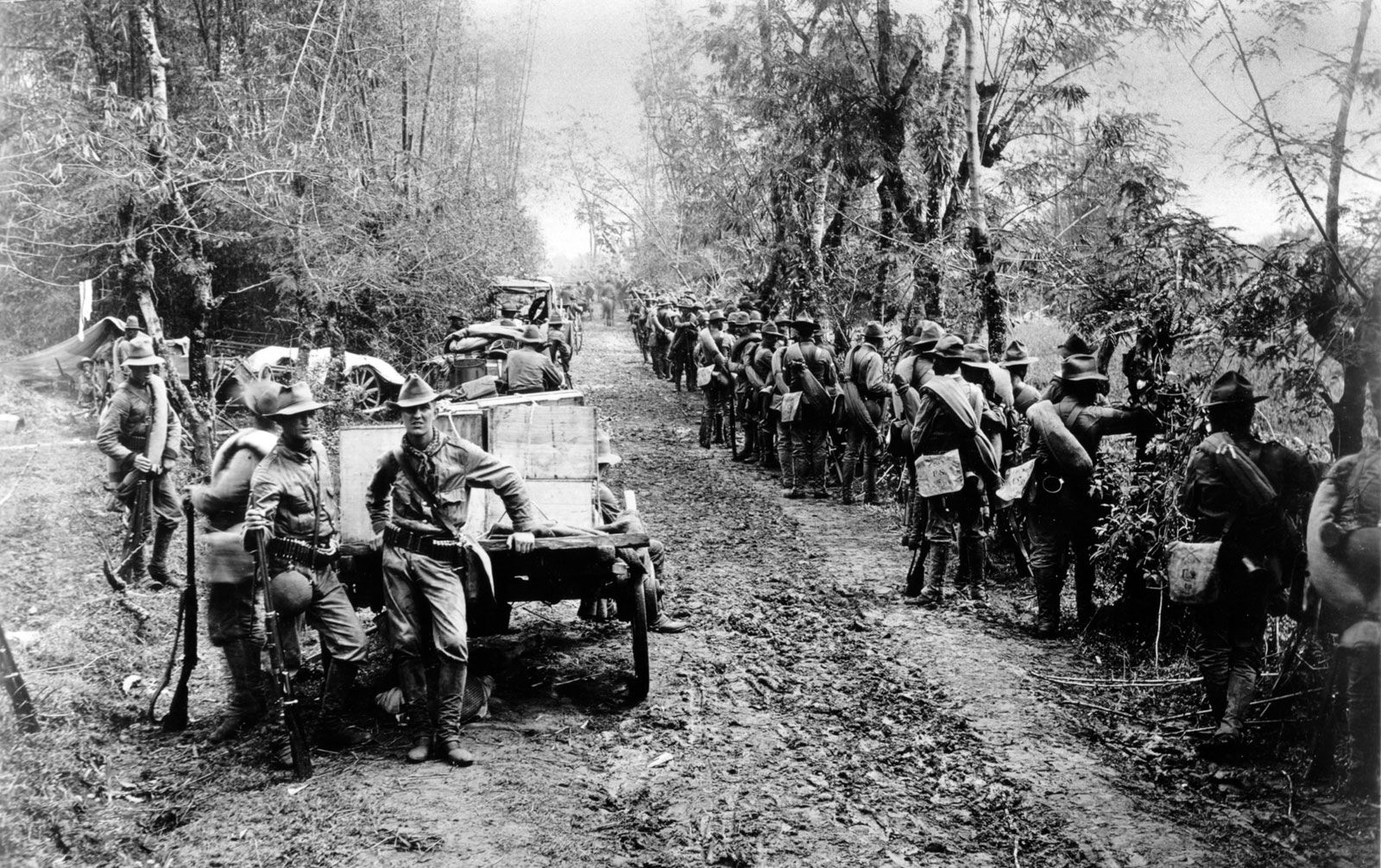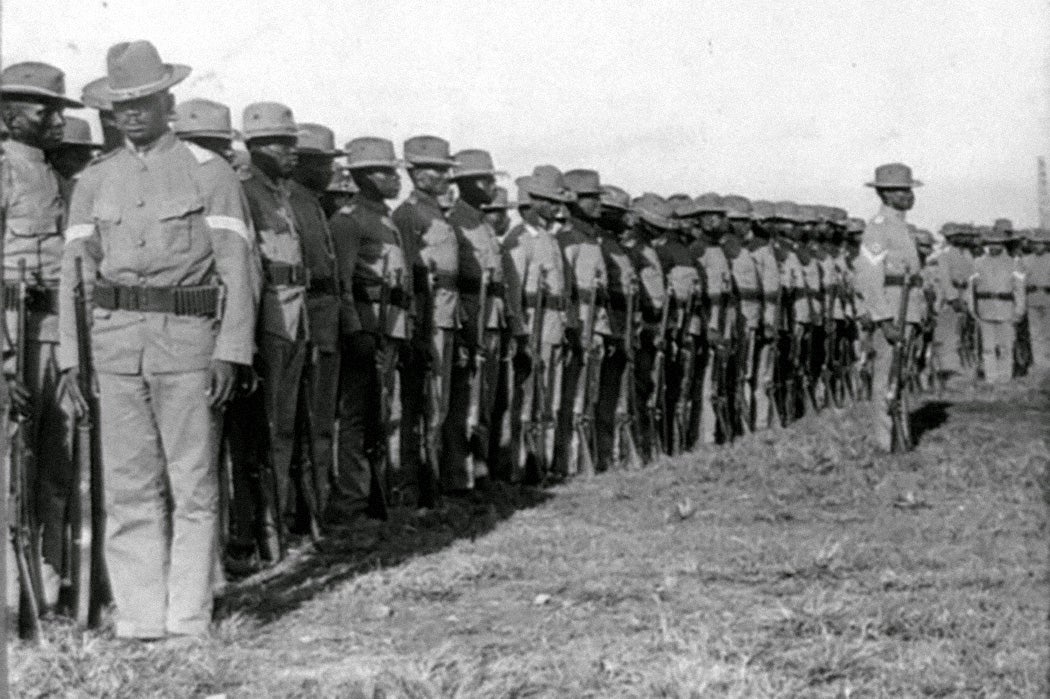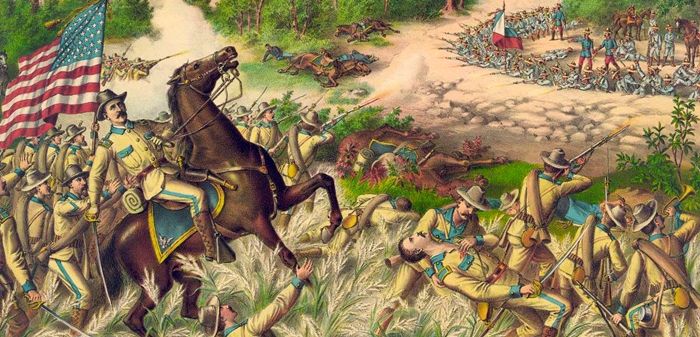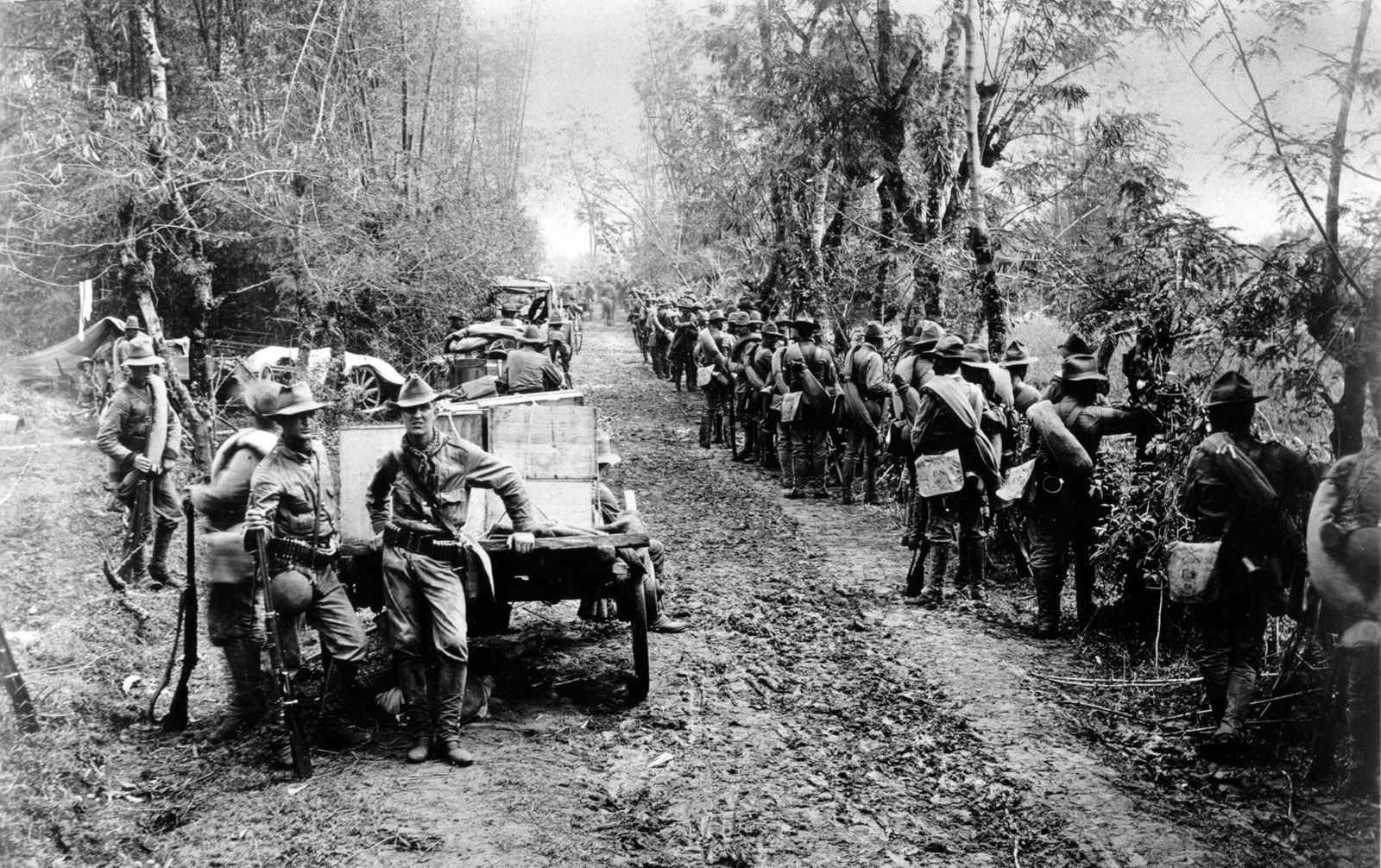The Philippine-American War stands as one of history’s most overlooked conflicts, emerging from the ashes of the Spanish-American War when the United States annexed the Philippines under the Treaty of Paris.

American troops during the Philippine-American War. Source: Britannica
The conflict ignited when Philippine nationalists, led by their aspirations for independence, established the First Philippine Republic in January 1899. The United States, however, refused to acknowledge this declaration, leading to the outbreak of hostilities on February 4, 1899. What began as conventional warfare quickly evolved into a brutal guerrilla campaign as Filipino forces adapted to combat American military superiority.

The devastation of Manila during the war. Source: Wikimedia Commons
The war’s strategic landscape was dominated by significant engagements, including the Battle of Manila, but it was the countless guerrilla skirmishes throughout the archipelago that defined its character. American forces, equipped with superior technology, implemented increasingly harsh tactics. Their strategy evolved into a devastating campaign of domination through force, employing scorched earth policies and establishing concentration camps as part of their pacification efforts.

African American soldiers faced complex moral dilemmas during the conflict. Source: JSTOR Daily
The human cost was staggering. While American casualties numbered around 4,200, Filipino combat losses ranged between 16,000 and 20,000. Most devastating was the civilian death toll, estimated at up to 200,000, primarily due to famine and disease. Both sides committed atrocities, including torture and summary executions, raising profound questions about the ethics of American imperialism.

Filipino resistance fighters during the war. Source: Legends of America
Though officially declared over on July 4, 1902, resistance persisted, particularly in the Moro regions, until 1913. The Philippine Organic Act of 1902 established limited self-governance, but full independence remained elusive until 1946. The war’s legacy continues to influence Philippine-American relations, shaping cultural, linguistic, and governmental institutions while raising ongoing discussions about colonialism and imperialism’s lasting impact.
References:
Encyclopedia Britannica – Philippine-American War – link
JSTOR Daily – The Ugly Origins of America’s Involvement in the Philippines – link
Categories: American History, Asian History, Colonial Studies, Military History, War History, War Studies
Tags: American Imperialism, Asian History, colonial history, Independence Movement, Military History, Philippine-American War, War Atrocities
Religion: Multiple
Country of Origin: Philippines, United States
Topic: Military History
Ethnicity: Multiple


